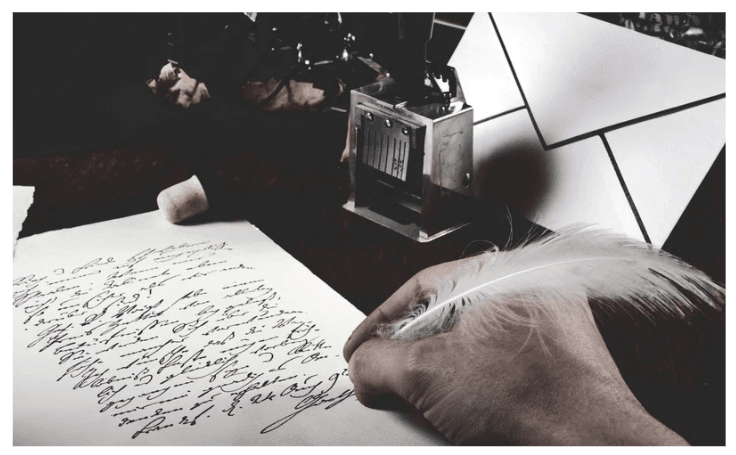Should Female Athletes Be Paid the Same as Male Athletes

Table of Contents
- The Gender Pay Gap in Sports: A Quick Snapshot
- Why Female Athletes Should Be Paid Equally
- Arguments Against Equal Pay: The Other Side
- Media Coverage and Its Role in Pay Disparity
- Role Models and Future Generations
- Real-World Progress Toward Equal Pay
- Addressing the Root Cause: Visibility and Investment
- Key Takeaways
- FAQs
- Conclusion
In the world of professional sports, skill, commitment, and peak performance are expected of every athlete - regardless of gender. However, when it comes to financial compensation, a glaring discrepancy emerges. Male athletes often earn significantly more than their female counterparts, even when competing in the same sport at the same professional level.
This disparity raises an important question: Should professional female athletes be paid the same as male athletes in the same sport?
Let’s explore the arguments for and against equal pay in professional sports, analyze real-world data, and understand why this debate is more than just about money - it’s about fairness, recognition, and respect.
The Gender Pay Gap in Sports: A Quick Snapshot
Despite progress in gender equality, the sports industry remains heavily skewed when it comes to pay. Here are a few striking examples:
Football (Soccer): The FIFA World Cup 2022 prize pool for men was $440 million, while the 2023 Women's World Cup was allocated only $110 million.
Tennis: One of the few sports with pay parity at major tournaments like Wimbledon and the US Open. However, endorsements and sponsorships still lean heavily towards male players.
Basketball: In the U.S., NBA players earn an average of $7.5 million annually, while WNBA players earn less than $150,000 on average.
Cricket: In India, BCCI recently announced equal match fees for male and female cricketers - but overall earnings, including endorsements, remain unequal.
Why Female Athletes Should Be Paid Equally
1. Equal Work Deserves Equal Pay
Female athletes train just as hard, compete with the same intensity, and represent their countries and clubs with equal passion. If the work, risk, and commitment are the same, the compensation should reflect that.
2. Encourages Participation and Growth
Equal pay signals respect and legitimacy. It can motivate young girls to pursue sports professionally, knowing they will be treated fairly. The long-term result? More diverse talent and greater public interest in women's sports.
3. Audience for Women’s Sports Is Growing
Contrary to outdated perceptions, viewership for women’s sports is rising rapidly. The 2023 Women’s FIFA World Cup broke broadcast records, and the Women’s IPL in India saw massive online engagement. Equal pay could further fuel fan interest and sponsorship opportunities.
4. Morally and Ethically Correct
Equal pay represents social justice and equality. In a modern society that champions inclusion and fairness, underpaying women in sports sends a regressive and damaging message.

Arguments Against Equal Pay: The Other Side
1. Revenue Generation Gap
One common argument is that male sports generate more revenue, ticket sales, and sponsorships - so players earn more. While there is some truth to this, it's often because male sports receive more marketing and media coverage, not because of inherent superiority.
2. Market Demand Drives Salaries
Critics argue that the sports industry is a business, and athletes are paid based on market value, not equality. If the demand for male sports is higher, the revenue (and pay) naturally follows.
3. Viewership and Attendance Still Lag Behind
Although women’s sports are growing, some still attract fewer viewers than their male counterparts. As a result, advertisers and broadcasters invest less, which impacts pay scales.
Media Coverage and Its Role in Pay Disparity
One major factor contributing to the gender pay gap in sports is media coverage. Historically, men’s sports have received more airtime, higher viewership, and more lucrative broadcasting deals. This disproportionate attention directly impacts endorsement deals, sponsorships, and overall public interest- elements that significantly influence how athletes are paid.
Female athletes often receive a fraction of the media coverage their male counterparts enjoy, despite delivering equally impressive or even superior performances. For example, during the 2015 FIFA Women’s World Cup, the U.S. women's national team drew more viewers in the U.S. final than the men's team ever had. Yet, the women still earned far less. This exposes the myth that “interest in women’s sports is low” as more a matter of exposure than actual demand.
If media outlets devoted equal time and storytelling to women's sports, the visibility and commercial viability would increase. And with visibility comes investment, which would justify equal pay not only on moral grounds but also on market-based logic.
Role Models and Future Generations
Equal pay in professional sports goes far beyond just fair compensation - it’s also about the messages we send to future generations. When young girls see female athletes like Simone Biles, Megan Rapinoe, or PV Sindhu being celebrated and compensated equally for their hard work and achievements, it affirms that their aspirations are valid and attainable.
Underpaying female athletes reinforces outdated notions that women’s work is less valuable or impactful. This not only discourages young talent but also stifles the growth of women’s sports as a whole. Equal pay, on the other hand, empowers young girls to pursue sports professionally, knowing they’ll be recognized, respected, and rewarded like their male counterparts.
Moreover, when brands and sports organizations take a stand for equality, it fosters a more inclusive and progressive sports culture. Fans and future athletes alike begin to value skill, dedication, and sportsmanship - regardless of gender.
Want to write powerful arguments and social opinion pieces like this? Join PlanetSpark’s Creative Writing Program and learn to craft persuasive essays, blogs, and speeches that make an impact. Book your free class today!
Real-World Progress Toward Equal Pay
Tennis Sets the Standard
Thanks to pioneers like Billie Jean King, all four Grand Slam tournaments now offer equal prize money to male and female players. However, outside the majors, disparities persist in smaller tournaments and endorsements.
U.S. Women’s Soccer Team
After years of legal battles and protests, the U.S. Women’s National Soccer Team finally achieved equal pay in 2022. They now share commercial revenues equally with the men’s team, marking a historic victory for pay parity.
Cricket and Equal Match Fees
The Board of Control for Cricket in India (BCCI) announced equal match fees for male and female cricketers in 2022. While this doesn’t address sponsorship disparities, it’s a big step forward.

Addressing the Root Cause: Visibility and Investment
To close the gender pay gap in sports, equal investment in infrastructure, training, broadcasting, and marketing for women's sports is essential. When given equal exposure, women’s events generate comparable excitement and revenue.
Media plays a crucial role. If networks prioritize women’s matches, advertisers will follow- and so will fans. This creates a virtuous cycle of growth and revenue, ultimately justifying equal pay from a business standpoint as well.
Change doesn’t happen overnight - but awareness and action can accelerate it. Here’s how we, as fans and society, can contribute:
Watch Women’s Sports: Whether it’s cricket, soccer, or basketball - your viewership counts.
Support Brands That Sponsor Women Athletes
Challenge Stereotypes: Promote the idea that sports are for everyone- regardless of gender.
Educate the Next Generation: Teach children about fairness and equal opportunity in sports and beyond.
Key Takeaways
| Point | Summary |
|---|---|
| Equal Effort | Women train and perform with the same dedication as men. |
| Economic Disparity | The gap is shrinking, but still wide in many sports. |
| Societal Impact | Equal pay reflects broader gender equality. |
| Need for Investment | More marketing and media attention can boost revenue. |
| Global Movements | Countries and organizations are slowly adopting equal pay. |
Whether a child dreams of becoming a footballer, tennis star, or cricketer, they should know that their gender won’t limit their success or income. Encouraging kids - especially girls- to pursue sports with passion and pride is the first step.
Let’s envision a world where every athlete is valued for their talent, not their gender.
FAQs
1. Why is there a pay gap between male and female athletes?
Ans. The pay gap exists primarily due to differences in sponsorship, media coverage, and audience size. However, these are often influenced by systemic inequalities in investment and visibility.
2. Do women athletes train less or play fewer matches than men?
Ans. No. Female athletes undergo the same level of training, physical exertion, and competition. In many sports, their schedules are just as rigorous as their male counterparts.
3. Which sports have achieved equal pay?
Ans. Tennis (at Grand Slams), track and field (at some global meets), and U.S. women’s soccer are notable examples of sports or teams with equal pay policies.
4. Does equal pay mean equal earnings in all aspects?
Ans. Not necessarily. While match fees or prize money may be equal, endorsements, bonuses, and media deals still show wide gender gaps.
5. How can fans help promote equal pay in sports?
Ans. Watch women’s games, support female athletes on social media, attend live events, and promote discussions about gender equality in sports.
Conclusion
So, should professional female athletes be paid the same as male athletes in the same sport? Absolutely yes - because talent knows no gender.
Equal pay is not just a financial issue - it’s a matter of respect, recognition, and progress. While critics often point to economics, the truth is: equality fosters growth - in sports, in business, and in society.
By investing in women’s sports, amplifying female voices, and holding institutions accountable, we can create a level playing field where every athlete has an equal shot at glory - and a fair paycheck to go with it.
Personalized Communication Report
Record a video to get a AI generated personalized communication report for your child

Hi There, want to try these
tips for your child with
LIVE with our expert coach?
Let's check your child's
English fluency
